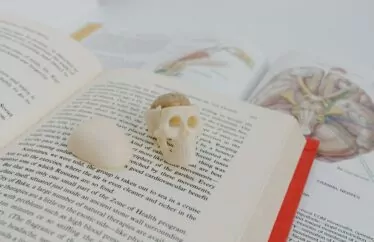
Whether you’re in a dorm or an apartment with strict pet rules or just a newbie fish enthusiast, this fun and comprehensive guide will teach you how to keep fish alive and thriving. From my own journey as a former fish killer to a step-by-step guide for successful fishkeeping, you’ll find everything you need right here.
The Fish Killer Chronicles: Learning from Past Mistakes
Let me be honest with you – I used to be a serial fish-killer. But fear not! From my unfortunate experiences, I’ve learned valuable lessons on how to keep fish alive. So, if I can do it, so can you!
Step 1: Choosing the Right Tank and Equipment
To keep your fish alive and well, you need to provide them with the right environment. Let’s explore the essentials of a proper fish tank setup.
Tank Size Matters
When choosing a tank, always remember that size matters. A good rule of thumb is to provide one gallon of water per inch of fish. But this is just a starting point, as some fish require more space due to their size, swimming habits, or territorial behavior.
Filtration, Heating, and Lighting
A quality filter, heater, and proper lighting are essential for keeping the water clean and free of harmful toxins, maintaining a stable water temperature, and ensuring a comfortable environment for your fish.
Step 2: Cycling Your Aquarium and Preparing the Water
Before adding any fish, it’s essential to cycle your aquarium and establish a healthy colony of beneficial bacteria. This involves adding a source of ammonia and monitoring the water chemistry until the ammonia and nitrite levels drop to zero.
When adding water to the tank or fishbowl, never take it straight from the tap. Instead, pour some into a container and let it sit for at least 24 hours to allow any chlorine to dissipate.
Step 3: Selecting the Right Fish and Adding Them to Your Tank
Now that your tank is cycled, it’s time to choose your fish. Do thorough research on the species you’re interested in, considering factors like size, temperament, and compatibility with other fish.
When introducing your fish to their new home, be sure to minimize stress and prevent shock. Float the unopened bag with the fish in your aquarium for 15-20 minutes to equalize the temperature, then slowly add small amounts of tank water to the bag before gently transferring the fish to the tank.
Step 4: The Low-Maintenance Cleaning Routine
One of the biggest mistakes I made was obsessively cleaning my fish’s home. Embrace the bacteria and only clean the tank when necessary. Perform regular water changes (20-30% every two weeks) to remove waste and replenish essential nutrients. If you must clean the tank or bowl, only wipe down one side with a rag to maintain a healthy balance of bacteria.
Step 5: Proper Fish Care and Consistent Feeding
Feed your fish a high-quality diet tailored to their specific needs. Stick to a regular feeding schedule, giving your fish small amounts of food once or twice a day. I keep my fish Hector in the bathroom, so I see him often!
Keeping Fish Alive in a Bowl: A Closer Look
While a proper tank setup is always the best option, it’s still possible to keep fish alive in a bowl if you follow some essential guidelines. If you’re considering a fishbowl for your aquatic friend, here are some important tips to ensure their survival and wellbeing.
Choosing the Right Fish
Some fish species can handle living in a bowl better than others. Betta fish, for example, are hardy and can tolerate less-than-ideal conditions. Keep in mind that even Bettas will thrive better in a proper tank setup. Do thorough research on the specific needs and preferences of the fish you want to keep.
Opt for a Larger Bowl
A larger bowl (at least 2-3 gallons) is essential for providing more swimming space and maintaining better water quality. Smaller bowls are prone to rapid fluctuations in temperature and water parameters, which can stress fish and lead to illness.
Partial Water Changes
Water quality is crucial for the health of your fish. Perform partial water changes every 2-3 days, replacing about 25-30% of the water with dechlorinated tap water. This will help remove waste, maintain water quality, and keep your fish in a healthier environment. I have lived strong by this rule for a year now, and my little fish Hector has not died! That is a record!
Adding Live Plants
Incorporating live plants into your fishbowl can help improve water quality by absorbing toxins and providing oxygen. They also offer shelter, hiding spots, and a more natural environment for your fish. Some suitable plant options for a fishbowl include Java moss, Anubias, and Java fern.
Temperature and Lighting
Ensure your fishbowl is placed in a location with a stable temperature, away from direct sunlight or drafts. While most fishbowl inhabitants can tolerate a range of temperatures, it’s essential to research your specific fish’s requirements. Additionally, keep your fishbowl in an area with sufficient natural or artificial light, but avoid direct sunlight as it can lead to rapid algae growth.
Monitoring Water Parameters
While it’s more challenging to maintain stable water parameters in a fishbowl, regularly monitoring water quality is crucial. Test the water for ammonia, nitrite, nitrate, and pH to ensure a healthy environment for your fish.
By following these essential guidelines for keeping fish alive in a bowl, you can create a more suitable and comfortable home for your aquatic friend. However, remember that upgrading to a proper tank setup is always the best choice for the long-term health and happiness of your fish.
What do you think?
So, what do you think? Are you ready to give fishkeeping another shot? Or maybe you’re already a successful fish parent with some tips to share. Either way, we’d love to hear your thoughts and experiences in the comments below. Good luck, and happy fishkeeping!
















